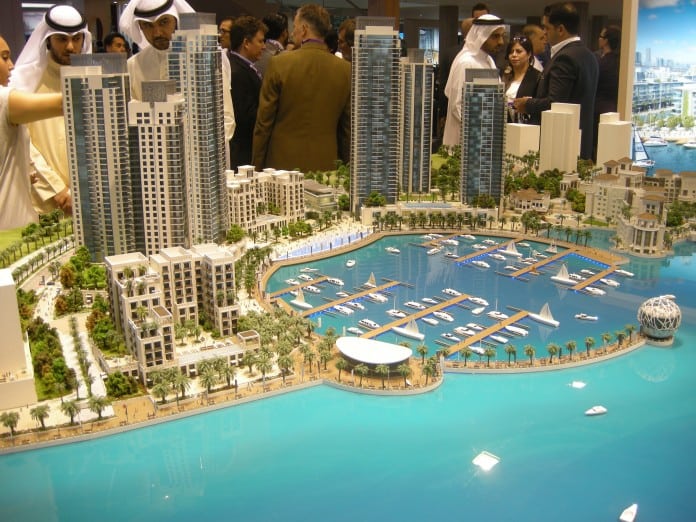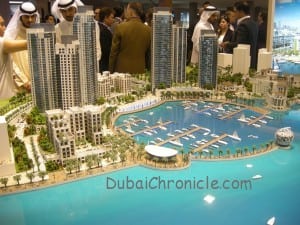
Although real estate prices in Dubai generally increased from the last year, the third quarter of 2014 saw a decline of 5.2 percent in the residential segment only. As a matter of fact the slowdown spread from the the second quarter onwards. There is a significant decline in demand, which certainly affects property prices and most of all off-plan properties. However, the downfall has little effect on developers, who still see the market as attractive. This may be due to the relatively easy access to cheap lending.
 On Tuesday, London-based real estate consultancy Knight Frank released a report, which says property prices in Dubai jumped 12.5 percent during the third quarter of 2013 and the third quarter of 2014. However, there has been a decline of 5.2 percent in residential prices in Q3 2014, which is the first quarterly drop in Dubai for four years, according to the report. This is mostly a result from the constant, steady supply of new units in combination with the sharp decrease of residential sales, seen in recent months. Still, Dubai is seen as among the hottest global cities not only for real estate investments.
On Tuesday, London-based real estate consultancy Knight Frank released a report, which says property prices in Dubai jumped 12.5 percent during the third quarter of 2013 and the third quarter of 2014. However, there has been a decline of 5.2 percent in residential prices in Q3 2014, which is the first quarterly drop in Dubai for four years, according to the report. This is mostly a result from the constant, steady supply of new units in combination with the sharp decrease of residential sales, seen in recent months. Still, Dubai is seen as among the hottest global cities not only for real estate investments.
- Read more: Dubai 3rd Investment Destination Worldwide
Since the announcement of Dubai’s selection to host World Expo 2020 host, developers have been urged to provide a massive amount of residential (and commercial, as well) properties in accordance with the city’s ambitious plan. Large developers, including Nakheel, Emaar Properties and Damac Properties, started 42 new projects, representing nearly 11,250 residential units. Besides the residential towers and villa complexes in Business Bay, Jumeirah Village and Dubailand, smaller developers also got an advantage on the news and launched a vast variety of smaller projects. Another 43 projects, which were put on hold, are now being revived by Dubai Land Department.
While these numbers seem impressive, according to HSBC Global Research report, the city will easily exhaust all new supply in short period of time, even in case the annual population growth declines to less than 5 percent. However, the total number of households rose by 7.6 in 2012 and in 2013, and the number of people who aren’t currently in the labor force increased by more than 7 percent, as well.
The latest Knight Frank’s global price index also shows that while the slowdown in many countries has nearly dropped the index into the negative category (recording a rise of only 0.1%), some markets are thriving. Ireland’s 12-month price growth of 15 percent is the world’s fastest pace, which puts the country in leading position ahead of Turkey (14% up), Dubai (12.5% up), and the UK (10.5% up). However, prices in Ireland are still 39 percent below the pre-crisis peak in 2007. China’s decline continues with 58 of the total 70 cities recording falling prices in the year to September. Property prices in the U.S. recorded a slight increase of 4.8 percent.
And the Middle East is the world region, which saw the strongest price growth in the year to September (9.5%).






















![The Square at Nad Al Sheba Gardens Now Open hope tax season treated you well! Just checking in—ready to refocus on growing your business? I remember how we discussed scaling your [specific aspect of their business, e.g., online presence] but paused due to time constraints. We now offer a streamlined 6-month plan that delivers real results without adding to your workload. Let me know if you'd like to chat—I’d love to help you pick up where we left off!](https://www.dubaichronicle.com/wp-content/uploads/2024/11/The-Square-5-218x150.jpg)









